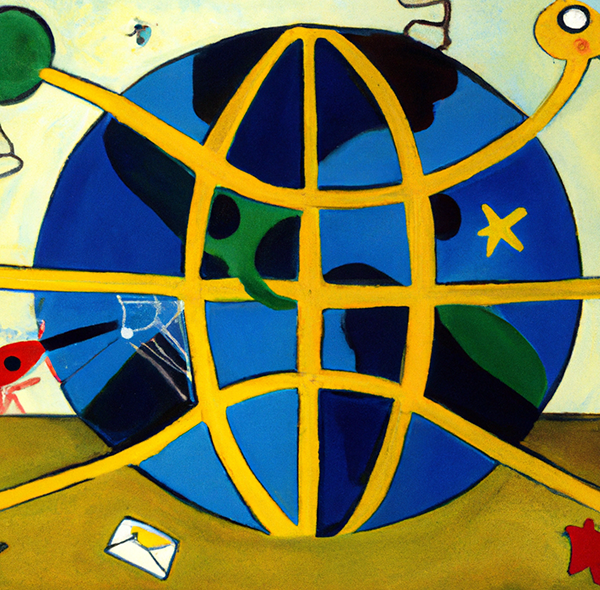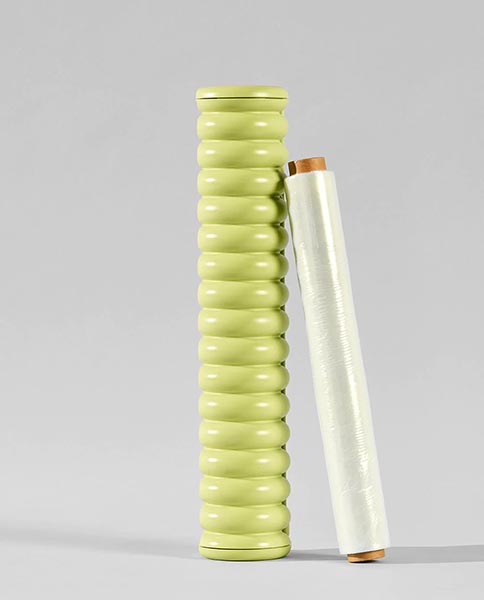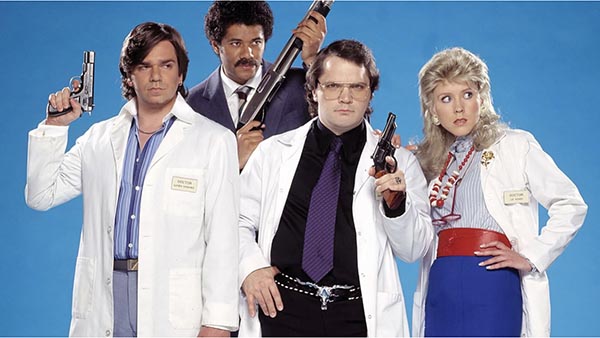(This week, WhatTheyThink is “reprinting” some key articles from 2023. This edition of AtW originally appeared on March 17. Look for our regular publishing schedule to resume on Monday.)

Love’s Labours Almost Lost
There is very little doubt that William Shakespeare is the greatest writer in the English (or perhaps any) language. And it’s almost by accident that many of his writings survived the centuries. Very few complete editions of any of his plays ever existed—fewer still were ever published—and all that survived at the time of his death were what are known as sides or prompts, dialogue for a specific actor to perform. Shortly after his death, a small band of his friends, actors, and others took on the monumental task of compiling complete editions of his plays and getting them in print. And thus in November 1623, seven years after the Bard shuffled off this mortal coil into that undiscovered country (if we’re allowed to mix our quotations), the First Folio was published, which Shakespeare scholars revere as “the Wonder of the Literary World,” because without it, half his plays would have vanished forever. (Nineteen plays appeared in print in quarto before the First Folio. Much pedagogical gnashing of teeth has been due to inconsistencies between the quarto and Folio editions. And if you read the footnotes to questionable passages in the plays, it’s dismaying how quick everyone is to blame the printer for any errors. Fie upon thee!)
Be all that as it may, this year marks the 400th anniversary of the First Folio, and there is a bustle of activity in the works. Says The Guardian:
The British Library will hold an exhibition this year, and a feature film with a screenplay by Richard Bean and Clive Coleman is in production. Two books, The Making of Shakespeare’s First Folio and Shakespeare’s First Folio: Four Centuries of an Iconic Book, both by Emma Smith, a professor of Shakespeare studies at Oxford University, will be published next month.
And the story of the First Folio was a saga unto itself:
Shakespeare’s three associates from the King’s Men acting company, John Heminges, Henry Condell and Richard Burbage, set to work on a compilation of the Bard’s plays. Eighteen had been printed but another 18 existed only as annotated handwritten copies or prompt books.
The trio took the edited scripts to a respected printing shop where compositors copied them into metal type. Many mistakes were made, and because paper was so costly the mistakes survived. The title page of the First Folio was a portrait of Shakespeare made by engraving very fine lines into a sheet of copper.
Sure, blame the printer.
The printing process was “very labour intensive in a very nasty working environment”, said Coles….
Ah, if only they had been a digital shop. A Canon could have produced the canon.
About 700–750 were printed and only 235 survive—and even then only 56 are complete. (Is there a website that tracks all extant copies? Of course there is.)
Smith said: “Without the First Folio, we would have some of Shakespeare’s plays, scattered in individual editions. But we wouldn’t have the sense of significance, weight (literally), and permanence that this large volume gives to the author.
Doomuseum
If you’re in San Francisco this spring, be sure to check out what Wired is calling “the Museum of the Future AI Apocalypse.” It was the brainchild of Audrey Kim, who got the idea from (switches screens, rereads Wired lede…) her dog.
Murphy [the dog] uses a combination of head nods and 10 buttons on the ground to communicate, she says, and has a habit of making friends with ravens. She taught him to use the buttons because she believes consciousness is a spectrum and intelligence is mysterious.
This led her to become curator of the Misalignment Museum, a temporary exhibition about the future of artificial intelligence.
The Misalignment Museum imagines a future in which AI starts to take the route mapped out in countless science fiction films—becoming self aware and setting about killing off humanity. Fortunately, in Kim’s vision the algorithms self-correct and stop short of killing all people. Her museum, packed with artistic allegories about AI and art made with AI assistance, is presented as a memorial of humankind’s future near-miss with extinction.
…Kim says the museum is meant to raise conversations about the destabilizing implications of supposedly intelligent technology. The collection is split across two floors, with more optimistic visions of our AI-infused future upstairs, and dystopian ones on the lower level.
The exhibition is funded until May by an ”anonymous donor.” Do we know it’s a human? Maybe we’re entering the age of “artificial investor.”
Film at 11
Plastic wrap, also known as cling film, has become one of those items that the modern world apparently cannot function without. Its household use is dwarfed by its use in the restaurant industry, and, alas, it can’t be recycled. So into the landfill it all goes. Sigh. However, Australian materials science company Great Lab has developed what they are calling Great Wrap. Says Core77:
Their Great Wrap is made from potato waste (the unusable bits of starch yielded by potato chip production) “and a mix of other compostable biopolymers,” with the result being that the stuff is fully compostable, no special facility required.
Thrown into your yard, Great Wrap breaks down in under 180 days, turning into harmless and non-toxic food for microbes, the company says. “It goes perfectly with your organic waste to be composted into rich, nutrient soil.”
It’s available now in what the company calls “Nudie Rolls” (sans dispenser) or avec dispenser (which clothes the Nudie Rolls, natch) for an extra $20. The dispenser is made from recycled PET bottles.

You can also subscribe to it, if subscribing to cling film is something you’re inclined to do.
Wear Is Graphene
Was it a good week for graphene news? It’s always a good week for graphene news! Umbro releases graphene-based sports apparel. From (who else?) Graphene-Info:
Umbro’s new ProTraining Elite long-sleeve running tops, baselayers and running tights have Versarien’s Graphene-Wear ink formula printed on the inside. The Graphene-Wear formula features novel properties that will allow wearers to experience enhanced thermal transmittance, increased moisture management, with improved drying rate, without compromising air or water vapor permeability. In particular, these three garments will benefit significantly from applying Graphene-Wear as they are being worn in circumstances where maintaining core body temperature is more desirable and difficult to achieve.

Another Brick in the News
Here’s a fun fact. Did you know that Lego bricks are in the public domain? That is, Lego’s original patents on the design of their bricks expired ages ago, so anyone can manufacture “Lego” bricks. Where the company makes its money these days is on licensing deals, so while anyone can make a Lego brick set, they couldn’t manufacture and sell a Star Wars or Harry Potter Lego set. As a result, via Semafor, that, combined with the pandemic lockdown-induced demand for home-bound diversions, have made Lego the largest toy company in the world—and it has even grown by two-thirds since 2020. If you have a subscription, Financial Times has more.
Slacking Off
Do you use Slack for internal communication? If so, we’re sorry to hear it. (Nah, we kid.) Anyway, via The Verge, Salesforce, owner of Slack, is now incorporating ChatGPT so you can have it “automatically write simple messages and summarize meetings.” What could possibly go wrong?
The Salesforce-owned Slack announced the new AI-powered app on Tuesday that will help you craft replies to your colleagues “in seconds.”
Those with access to the app can click the three-dots icon in a thread and hit “Draft reply” instead of typing out the response themselves. It’s still not clear how detailed these responses will get — or if they might get a bit wonky at times.
Unless we’re outliers (and what are the odds of that), Slack really isn’t designed for extensive dissertations so it really doesn’t take a ton of time to respond to most Slack messages—unless you’re really a slacker. We guess everyone is jumping on the ChatGPT bandwagon.
Good thing they’re not incorporating Bing AI, although that could be kind of entertaining, depending on how you feel about your coworkers.
I Go to Meetings Pieces
Here’s an…interesting new videoconferencing display that would be perfect for the court of Louis XVI having Zoom meetings during the French Revolution: Behead Wehead from a startup company by the same name. Or, as Core77 describes it:
You know what would make video calls more natural? If it looked like one party was beheaded, and then their detached head was reanimated inside of a fragmented prism connected to rapidly-moving motors.

“Controlling the Wehead by your own head movements, by your phone’s gyroscope or even simply by the on-screen controller or a mouse, you experience unprecedented [sic] feeling of freedom,” the company writes. “Wehead is exceptionally good at recreating the feeling as if the person is actually there with you.”
Um, does it? Does it really? Seems really creepy.
We were going to save this video for Halloween, but we’ll post it now:
Vive le roi!
Not So Thin Air
What if it were possible to generate electricity out of thin air? Pure mumbo jumbo? Mumbo, yes, but jumbo…perhaps not. Via LiveScience, scientists have long known that the bacterium Mycobacterium smegmatis, a cousin of the bacteria that cause tuberculosis and leprosy, was able to convert atmospheric hydrogen to electricity, but had never known exactly how. Until now. It’s actually thanks to an enzyme and they suggest that it could be used as a new, clean source of energy.
The enzyme, which has been named Huc, is used by the bacterium Mycobacterium smegmatis to draw energy from atmospheric hydrogen, enabling it to survive in extreme, nutrient-poor environments.
Now, by extracting and studying the enzyme, the researchers say they have found a new energy source that could be used to power a range of small portable electrical devices. They published their findings March 8 in the journal Nature (opens in new tab).
They envision a Huc-based power source using air to run small portable devices such as “biometric sensors, environmental monitors, digital clocks, and calculators or simple computers.”
“When you provide Huc with more concentrated hydrogen, it produces more electrical current,” he said. “Which means you could use it in fuel cells to power more complex devices, like smart watches, or smartphones, more portable complex computers, and possibly even a car.”
Look for the new Toyota Hatchbacteria, coming soon?
“Huc can extract energy from hydrogen in the air, which is effectively limitless,” Grinter said. “The amount of electricity that can be generated from the low concentrations of hydrogen in the air will be modest. This will limit the application of Huc in this context to devices that require a small but sustained amount of power. A complementary use of Huc would be in fuel cells where a higher concentration of hydrogen is provided.”
By the way, in case you’re wondering, no, M. smegmatis is not pathogenic like its cousins, so there is no need to worry about a potential leprosy or TB outbreak. Or at least not from Huc-powered devices.
GOAT Goat
California is no stranger to wildfires, of course, and one of the big contributors to fire risk is overgrowth of vegetation. How to combat vegetal overgrowth? Goats! Via Axios, San Francisco schools have been turning to local nonprofit City Grazing to hire a herd of goats to eat overgrown weeds and other invasive vegetation.
The goats finished up at June Jordan School for Equity in the Excelsior last month and are currently at Thurgood Marshall Academic High School, which shares its land with Willie L. Brown Jr. Middle School in the Bayview, Church said.
The goats are heading to at least two elementary schools later this year.
What they're saying: “It’s fun to put animals intentionally into school campuses in urban settings,” said Church, who noted that bringing goats to schools enables kids to learn about sustainability.
Hmm…maybe that was the reason for the “Goat My Valentine” goat fashion show last February. San Francisco loves its goats.
Meanwhile, goat grazing is an economical and environmentally friendly option to manage the land, a spokesperson for San Francisco Unified School District told Axios via email.
Goats, for example, eat the brush and weeds and then excrete nutrients back into the soil.
City Grazing has 125 goats and in 2022, they munched on 53 acres of land across 46 sites in the city. During the pandemic year, they were also a popular outdoor attraction.
“Watching goats eat is incredibly soothing when you’re watching the world fall apart and can’t really go anywhere,” she said.
It’s amazing we survived that year.
Tales from the Darkplace
Boing Boing celebrates a long lost classic, one of the funniest programs (or programmes) ever aired: Garth Marenghi’s Darkplace. Airing on the UK’s Channel 4 in 2004, the premise was that it was a horror series that had been filmed in the 1980s and then killed by “the powers that be” for being too radical to air. Twenty years later, the story continues, the network begged Marenghi to retrieve the old film from his “spacious basement” and allow it to air.
Marenghi introduced himself as “author, dreamweaver, visionary—plus actor,” and the series was set in a sinister hospital in Romford, located over the very gates of hell itself. Marenghi also starred as the brilliant Dr. Rick Dagless MD, who battled supernatural forces of evil with his colleagues Dr. Lucien Sanchez (Todd Rivers), Dr. Liz Asher (Madeleine Wool), and administrator Thornton Reed (Dean Learner). That was the supposed premise—but the show was actually a spoof.
As explained by Michael Mackenzie, “In reality, Darkplace is an elaborate and brilliantly executed hoax, designed to lampoon 1980s television, horror, sci-fi and the rampant egotism of self-appointed ‘mastermind’ authors. It was actually made in 2004, but the effect is so convincing that it’s genuinely believable as a product of the 1980s. Everything, from the fashion, to the music, to the texture of film stock, to the overly punchy audio quality and dated synthesiser score, is captured with expert aplomb, to the extent that more than a few people have actually been taken in by the scam.”
“Garth Marenghi” was actually a fictional character played by series creator Matthew Holness.
As Jumbled Thoughts of a Fake Geek Boy explained, “On the first layer, you have the show-within-the-show itself, produced with every ounce of ineptitude the cast and crew could muster up…. On the second layer, you have the fiction surrounding Garth and Dean themselves, and the various people they’ve sucked into producing a product that falls well outside their competence range…. Where things get really interesting is in how the two layers interact.”
You can watch the first episode here, and we recommend you do.

We also did not know that Garth Marenghi’s new “long lost” book TerrorTome was published last year.
When horror writer Nick Steen gets sucked into a cursed typewriter by the terrifying Type-Face, Dark Lord of the Prolix, the hellish visions inside his head are unleashed for real. Forced to fight his escaping imagination – now leaking out of his own brain – Nick must defend the town of Stalkford from his own fictional horrors, including avascular-necrosis-obsessed serial killer Nelson Strain and Nick’s dreaded throppleganger, the Dark Third.
Can he and Roz, his frequently incorrect female editor, hunt down these incarnate denizens of Nick’s rampaging imaginata before they destroy Stalkford, outer Stalkford and possibly slightly further?
From the twisted genius of horror master Garth Marenghi – Frighternerman, Darkscribe, Doomsage (plus Man-Shee) – come three dark tales from his long-lost multi-volume epic: TerrorTome.
Can a brain leak? (Yes, it can)
We’ll be ordering that one…
Bed of Noodles
Who among us has not wanted to sleep inside a Cup of Noodles? Well, the folks at Nissin, makers of the iconic (are they?) Cup of Noodles, are threatening that very thing. Says Boing Boing:
Nissin, makers of the iconic and saltlicious Cup Noodles, created a prototype of Cup Noodles bedding. Apparently if the company’s tweet gets shared enough, they'll consider making the blanket and pillows real products.

We prefer sleeping on a bed of rice.
Let’s Keep It Hidden
Van Leeuwen Ice Cream is no stranger to outré ice cream flavors—they were behind Grey Poupon Ice Cream and Kraft Macaroni & Cheese Ice Cream—and this year they have partnered with Hidden Valley (yes, the salad dressing company) to come out with Hidden Valley Ranch Ice Cream. Food & Wine has the scoop (as it were):
The editors at Food & Wine got an early taste of the new ranch flavor, and the feelings in the office were certainly mixed. With reactions ranging from “it’s very garlic powder forward” to “it tastes like sweet ranch” to “I only wish I had french fries to pair it with” to “no,” it’s a flavor that may not be for everyone, but for those die-hard ranch fans out there, it’s absolutely memorable. The ice cream is packed with the same flavorful herbs, buttermilk, and just the right amount of sweetness you find in the bottle.

But wait, there’s more.
This isn’t the only new flavor coming from the brand. Its full spring lineup includes Sweet Maple Cornbread, Blood Orange Chocolate Chip, Carrot Cake, Strawberry Shortcake, Honey Graham Cracker, and Limoncello Cake. All the new flavors will be available nationwide for $4.98. However, like many of its products, these are a limited release and will only be available from March 20 through May 28.
Consider yourselves warned.
Did anything catch your eye “around the Web” this week? Let us know at [email protected].
This Week in Printing, Publishing, and Media History
March 13
1781: William Herschel discovers Uranus. (Careful with that pronunciation.)
1921: American cartoonist Al Jaffee born.
1930: The news of the discovery of Pluto is telegraphed to the Harvard College Observatory.
1943: American poet, short story writer, and novelist Stephen Vincent Benét dies (b. 1898).
March 14
1663: Otto von Guericke completes Nature of Space and the Possibility of the Void, which postulated the existence of a vacuum.
1836: English author of Mrs Beeton’s Book of Household Management Isabella Beeton born.
1874: Dutch businessman and co-founder of Philips Electronics Anton Philips born.
1879: German-American physicist, engineer, academic, and Nobel Prize laureate Albert Einstein born.
1885: The Mikado, a light opera by W. S. Gilbert and Arthur Sullivan, receives its first public performance in London.
1931: Alam Ara, India’s first talking film, is released.
1936: The first all-sound film version of Show Boat opens at Radio City Music Hall.
1994: Linux kernel version 1.0.0 is released.
2018: English physicist and author Stephen Hawking dies (b. 1942).
March 15
44 BC: Et tu, Brute? Roman general and statesman Julius Caesar dies (b. 100 BC).
1918: American author, critic, and biographer (James Joyce, Oscar Wilde) Richard Ellmann born.
1937: American short story writer, editor, and novelist H. P. Lovecraft dies (b. 1890).
March 16
1870: The first version of the overture fantasy Romeo and Juliet by Tchaikovsky receives its première performance.
1894: Jules Massenet's opera Thaïs is first performed.
1906: English-American violinist and comedian Henny Youngman born. Take his wife...please!
1926: Robert Goddard launches the first liquid-fueled rocket, at Auburn, Massachusetts.
In 1920, the New York Times published an editorial claiming that Robert Goddard "lack[ed] the knowledge ladled out daily in high schools" and that it was "absurd" to believe that rockets would work in space. They issued a correction 17 July 1969, the day after Apollo 11 launched.
— Quite Interesting (@qikipedia) March 11, 2019
2020: The Dow Jones Industrial Average falls by 2,997.10, the single largest point drop in history and the second-largest percentage drop ever at 12.93%, an even greater crash than Black Monday (1929).
March 17
1941: American singer-songwriter and guitarist Paul Kantner born.
1956: American actor, comedian, screenwriter, and author Fred Allen dies (b. 1894).
1973: The Pulitzer Prize-winning photograph Burst of Joy is taken, depicting a former prisoner of war being reunited with his family, which came to symbolize the end of United States involvement in the Vietnam War.
March 18
1733: German author and bookseller Christoph Friedrich Nicolai born.
1768: Irish novelist and clergyman Laurence Sterne dies (b. 1713).
1850: American Express is founded by Henry Wells and William Fargo.
1932: American novelist, short story writer, and critic John Updike born.
1961: American singer-songwriter and guitarist Grant Hart born.
March 19
1813: Scottish missionary and explorer David Livingstone born, we presume.
1895: Auguste and Louis Lumière record their first footage using their newly patented cinematograph.
1928: Irish-American actor, director, producer, and screenwriter Patrick McGoohan born. Be seeing you.
1931: Gambling is legalized in Nevada. (What are the odds it’ll catch on?)
1933: American novelist Philip Roth born.
1962: Bob Dylan releases his first album, Bob Dylan.
2008: British science fiction writer Arthur C. Clarke dies (b. 1917).















Discussion
Join the discussion Sign In or Become a Member, doing so is simple and free